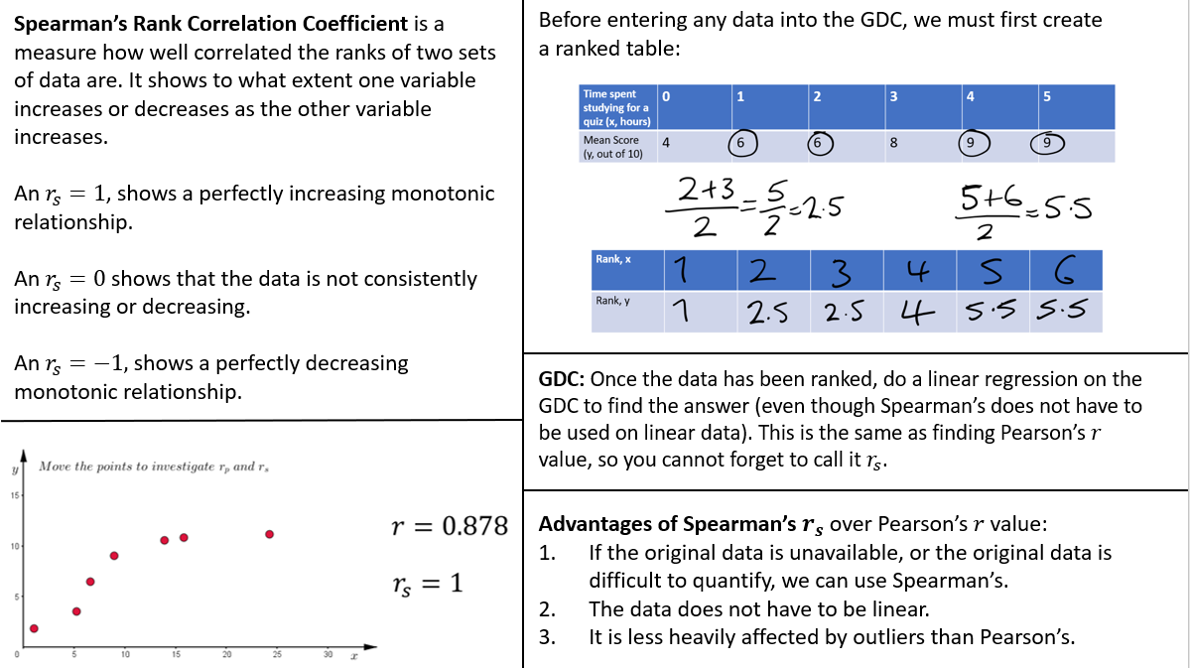
Analysing how closely two things are correlated is incredibly useful to ascertain exactly how strongly one variable affects another. Whilst helpful if the data is approximately linear, Pearson's Product Moment Correlation Coefficient can be insufficient when analysing connections in the real world. This is especially the case when variables are difficult to measure or quantify, such as judging the quality of different dancers, or the taste of different foods, for example. Hence, we may need a different correlation coefficient in specific cases.
In this unit you should learn to…
- Understand the difference between Pearson's Product Moment Correlation Coefficient and Spearman's Rank Correlation Coefficient.
- Create a ranked table.
- Use your GDC to find Spearman's Rank Correlation Coefficient.
- Interpret what the Spearman's Rank Correlation Coefficient means in a specific context (see quiz questions and exam style questions for this).
Self Checking Quiz
Practice your understanding on these quiz questions. Check your answers when you are done and read the worked solutions when you get stuck. If you find there are still some gaps in your understanding then go back to the videos above.
How much of 4.10 Spearman's Rank Correlation Coefficient have you understood?



.png)


.png)
.png)
.png)
 Twitter
Twitter  Facebook
Facebook  LinkedIn
LinkedIn